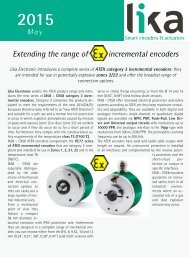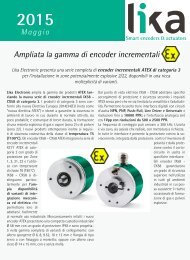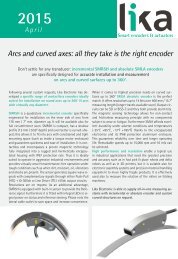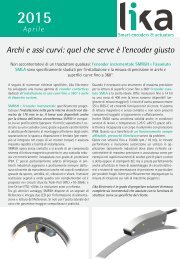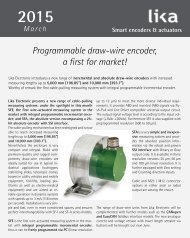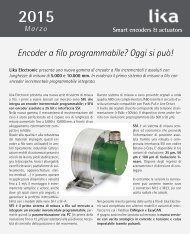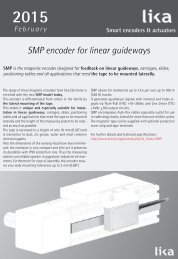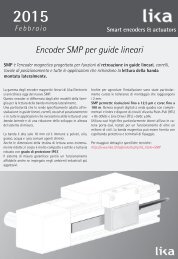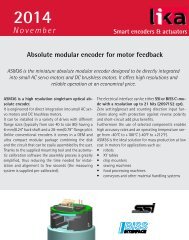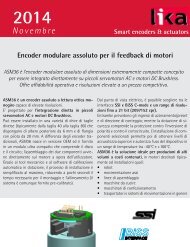LINEPULS & LINECOD catalogue 2016 in English
Lika Electronic incremental and absolute linear encoders catalogue 2016 in English Our new linear encoders catalogue is out now, and features many innovative new products and up-to-date information. The catalogue is expressly designed to set out the comprehensive range of incremental & absolute linear encoders from Lika Electronic. Check it out, it is completely renewed! Make sure you don’t miss out on a copy, download the pdf file from our web site or request your hard copy now! We have also got an interactive digital version in the works that shall be released soon!
Lika Electronic incremental and absolute linear encoders catalogue 2016 in English
Our new linear encoders catalogue is out now, and features many innovative new products and up-to-date information. The catalogue is expressly designed to set out the comprehensive range of incremental & absolute linear encoders from Lika Electronic. Check it out, it is completely renewed!
Make sure you don’t miss out on a copy, download the pdf file from our web site or request your hard copy now!
We have also got an interactive digital version in the works that shall be released soon!
Create successful ePaper yourself
Turn your PDF publications into a flip-book with our unique Google optimized e-Paper software.
<strong>LINECOD</strong><br />
Absolute output circuits and fieldbus <strong>in</strong>terfaces<br />
“MSB left aligned” protocol allows to left align the bits, beg<strong>in</strong>n<strong>in</strong>g from MSB to LSB; MSB<br />
is then sent at the first clock cycle. If the number of clock signals is higher than the data bits,<br />
then unused bits are forced to low logic level (0) and follow the data word.<br />
The number of clocks to be sent to the encoder must equal the number of data bits at least,<br />
anyway it can be higher, as stated previously. The great advantage of this protocol over the<br />
LSB RIGHT ALIGNED format is that data can be transmitted with a m<strong>in</strong>imum time loss and<br />
the TM monoflop time can immediately follow the data bits without any additional clock<br />
signal. In specific encoders the SSI word can further provide an error bit and the parity bit.<br />
The error bit follows the position <strong>in</strong>formation and is <strong>in</strong>tended to communicate the normal<br />
(“1” high logic level) or fault (“0” low logic level) state of the Slave. Parity bit is an optional<br />
function used for check<strong>in</strong>g <strong>in</strong> a very basic way whether errors occur dur<strong>in</strong>g transmission (for<br />
further <strong>in</strong>formation refer to page 41).<br />
“MSB LEFT ALIGNED” protocol<br />
MSB LEFT ALIGNED protocol scheme (BG-, GG- and G1- output circuit codes)<br />
Advantages: simple, efficient and cost-effective, less conductors, less electronic components,<br />
transmission rate up to 2 Mbit/s, circuit can be galvanically <strong>in</strong>sulated by means of<br />
optocouplers, <strong>in</strong>creased noise immunity, long cable runs, SSI encoders can be easily <strong>in</strong>tegrated<br />
<strong>in</strong>to conventional fieldbus or <strong>in</strong>dustrial Ethernet networks us<strong>in</strong>g IF55 converters (see<br />
on page 47).<br />
Disadvantages: po<strong>in</strong>t-to-po<strong>in</strong>t architecture, transmission speed lower than <strong>in</strong> compet<strong>in</strong>g<br />
parallel <strong>in</strong>terface.<br />
Recommended <strong>in</strong>put circuit<br />
SSI cable length<br />
For max. cable lengths refer to the section “Cable lengths” on page 44.<br />
38




